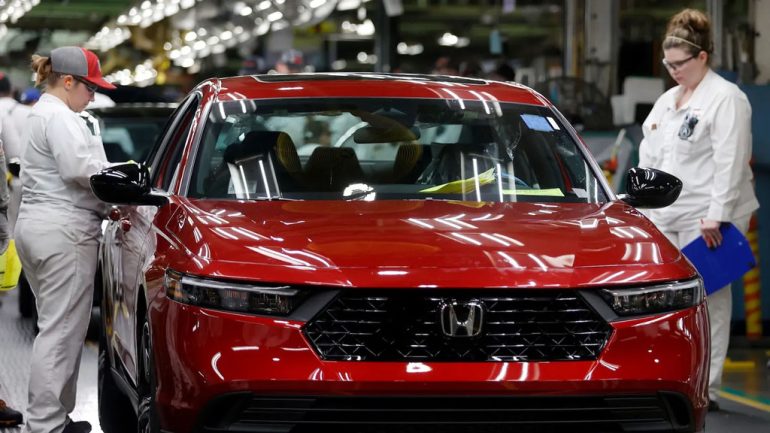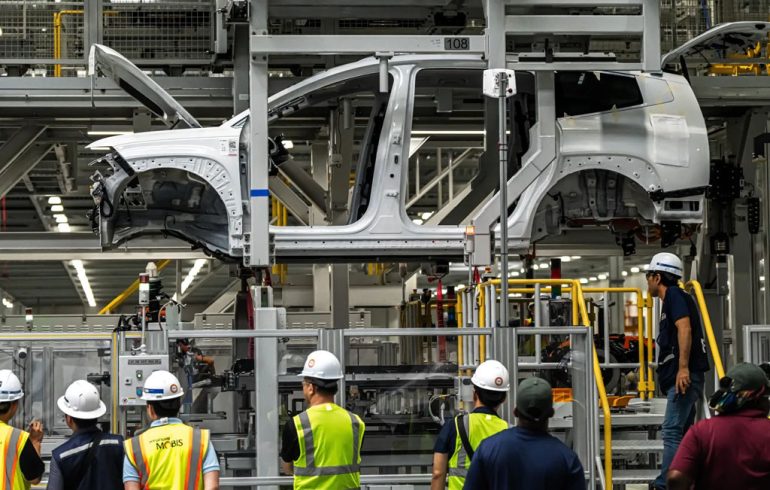Regardless of Tariffs, Asian Automakers Double Down on America with Huge Investments and Hybrid Energy : Automotive Addicts
Automotive

Simply when it appeared world commerce tensions and rising tariffs would possibly push overseas automakers away from the U.S. market, Asia’s greatest automobile manufacturers are doing the precise reverse. As a substitute of pulling again, legacy automakers like Toyota, Hyundai, Kia, and Honda are leaning into America with larger investments, stronger hybrid lineups, and a transparent message: the U.S. remains to be their most necessary battleground.
Which will sound stunning given the present local weather. The U.S. has slapped tariffs on imported vehicles and auto components, and extra may very well be on the best way. But even with the uncertainty, the numbers paint a transparent image. North America accounts for at the least 40% of income at Toyota and Hyundai, and that share isn’t shrinking. In reality, many analysts say it’s prone to develop, particularly as China turns into more and more dominated by home EV giants like BYD, leaving fewer alternatives for Japanese and Korean manufacturers to compete there.

Whereas the speedy influence of tariffs is a better value for doing enterprise, most Asian automakers have resisted passing these will increase immediately onto clients. As a substitute, they’re enjoying the lengthy sport. By holding costs regular and leveraging their fuel-efficient hybrid know-how, they’re quietly gaining floor within the U.S. whereas extra susceptible opponents like Nissan and Stellantis battle to search out footing.
It’s a part of a broader shift that’s many years within the making. Japanese and Korean automakers didn’t simply dip their toes into the U.S. market — they constructed roots. Over the previous 40 years, manufacturers like Toyota and Honda have poured greater than $66 billion into American manufacturing. They’ve established greater than two dozen manufacturing crops, turning into not simply overseas manufacturers working within the U.S., however key gamers within the American industrial panorama. Hyundai and Kia, as an illustration, already function three U.S. crops and are actually investing an extra $21 billion into home manufacturing and metal manufacturing.
Toyota, which manufactured 1.3 million autos within the U.S. final 12 months, is producing greater than half of the autos it sells to American consumers proper right here on U.S. soil. Hyundai’s U.S. income hit a decade-high in 2024, with some estimates suggesting that as a lot as 60% of the model’s world income now come from American gross sales.
This isn’t nearly economics. It’s additionally about model status. Hyundai, as soon as mocked within the Eighties for poor construct high quality, has reworked right into a premium-feeling worth chief within the U.S., due to years of strategic funding and product improvement. With the rise of EVs inflicting rising pains throughout the business, hybrids have turn into a candy spot for a lot of American consumers involved about vary anxiousness and charging infrastructure. Toyota, Hyundai, and Kia have notably robust hybrid portfolios, and that’s serving to them seize extra market share whereas others scramble to adapt.

Analysts are calling this subsequent part of the business a “sport of rooster.” Stronger gamers with higher margins and deeper investments within the U.S. are holding their floor, whereas others will probably be compelled to both consolidate or fall behind. It’s already prompting hypothesis about mergers and partnerships. Might we see Nissan rekindle merger talks with Honda? Will smaller manufacturers like Mazda and Subaru lean much more closely on their Toyota relationships? It’s not out of the query.
Tariffs, mockingly, might speed up the localization development that many of those firms have been already pursuing. With Chinese language EV makers largely locked out of the U.S. due to steep tariffs, Japanese and Korean manufacturers now face much less stress from low-cost competitors. That opens the door even wider for them to develop market share — particularly as they shift extra of their provide chains and remaining meeting operations stateside.
After all, there’s a price to all this. Constructing within the U.S. isn’t low-cost, particularly with larger labor bills and regulatory complexity. Some firms are nonetheless working by way of the monetary math, and analysts warn that the true hit to earnings might not but be totally priced into investor forecasts. As quarterly earnings roll in, we may see some surprises — each good and unhealthy — as firms reveal how they’re adapting to the brand new tariff-driven actuality.
Nonetheless, the message from Asia’s auto giants is obvious: America isn’t simply one other market, it’s the market. They usually’re not going anyplace. If something, they’re digging in deeper, utilizing the challenges of immediately as a springboard to dominate tomorrow. Within the course of, they’re not simply competing within the U.S. — they’re serving to form the way forward for the American auto business itself.
FOLLOW US TODAY:

Lloyd Tobias is a seasoned automotive journalist and passionate fanatic with over 15 years of expertise immersed on the planet of vehicles. Whether or not it’s exploring the newest developments in automotive know-how or retaining an in depth pulse on breaking business information, Lloyd brings a pointy perspective and a deep appreciation for all issues automotive. His writing blends technical perception with real-world enthusiasm, making his contributions each informative and fascinating for readers who share his love for the drive. When he’s not behind the keyboard or below the hood, Lloyd enjoys check driving the most recent fashions and staying forward of the curve in an ever-evolving automotive panorama.






